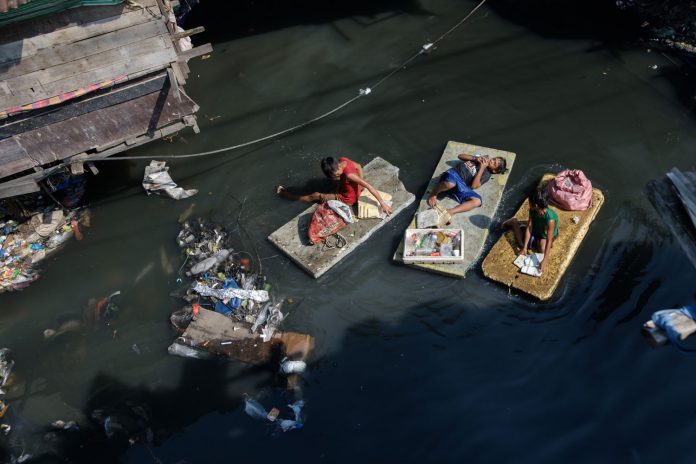In many developing countries, children grow up in potentially life-threatening environmental conditions – in squalor, surrounded by rampant pollution such as trash, toxic water and polluted air. These pictures – from “Happyland” in Manila, where families salvage waste for a living – present a clear picture of the health hazards posed by these conditions.
Article by Hastings Forman
In a release on March 6, 2017, the World Health Organization (WHO) reported that one in four child deaths under the age of five are caused by environmental risks such as air pollution (both indoor and outdoor), second-hand smoking, dirty water, as well as lack of sanitation and hygiene – that’s a staggering 1.7 million children.

According to Dr Margaret Chan, the Director-General of WHO, “a polluted environment is a deadly one – particularly for young children. Their developing organs and immune systems, and smaller bodies and airways, make them especially vulnerable to dirty air and water.”
The recent report (2017) analysed the number of annual fatalities, and found that:
1. 570,000 deaths were from respiratory infections, such as pneumonia, attributable to air pollution and second-hand smoke.
2. 361,000 deaths were caused by diarrhea, attributable to dirty water, poor sanitation and hygiene.
3. 270,000 deaths were due to neonatal conditions affecting newborns, including prematurity, attributable to dirty water, poor sanitation and hygiene, and air pollution.
4. 200,000 deaths were due to unintentional injuries such as drowning and poisoning.
5. 200,000 deaths were from Malaria, attributable to unmolested breeding sites of mosquitoes and dirty water.

The WHO found that a large number of these deaths are readily preventable: Access to clean water and clean cooking fuels would markedly reduce the numbers of children falling prey to malaria, diarrhoea and pneumonia. Furthermore, reducing air pollution and avoiding secondhand smoke would reduce children’s risk of pneumonia and asthma in the long-term, as well as heart disease and cancer.
The report also cited the example of electronic and electrical waste (such as old mobile phones that are improperly recycled), which can expose children to toxins and chemicals, which in turn cause a host of other issues, such as attention deficiency, lung damage and cancer. They also noted a correlation between climate change and a rise in the rates of asthma in children, stating that an increase in temperature and levels of CO2 favours pollen growth, which is associated with increased levels of asthma. The report estimated that out of all the reported cases of children under five with asthma symptoms, 44 percent are connected to exposure to environmental factors.

Dr Maria Neira, WHO’s Director of the Department of Public Health, Environmental and Social Determinants of Health, said, “a polluted environment results in a heavy toll on the health of our children. Investing in the removal of environmental risks to health, such as improving water quality or using cleaner fuels, will result in massive health benefits.”
Under the Sustainable Development Goals, countries are committed to improving children’s environmental health and wellbeing, and ending avoidable deaths of children under five by 2030. The WHO asserts that governments can do more across a variety of sectors, such as managing hazardous waste and reducing the usage of dangerous chemicals, ensuring that homes have clean fuel and do not use dangerous building materials (such as asbestos and lead paint), and monitoring people’s health and educating people about environmental dangers.


The boys prepare to scavenge plastic in the river. © Paul RatjeRead more about families living in potentially fatal environmental conditions in “They Call It Happy Land” by Joe Henley and Paul Ratje, featured in Asian Geographic’s Climate Change Issue 1/2017.











